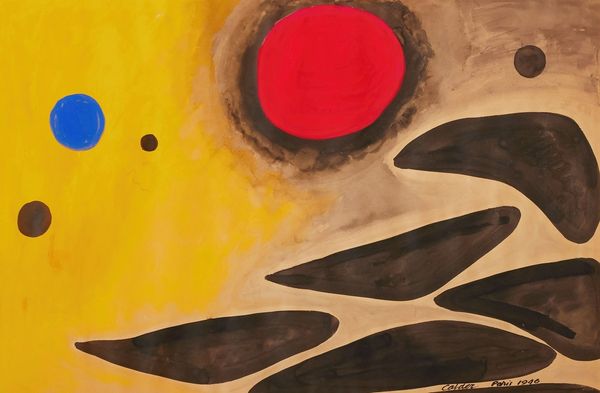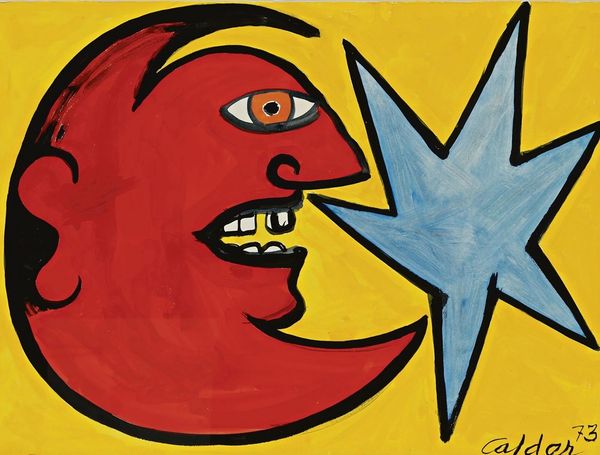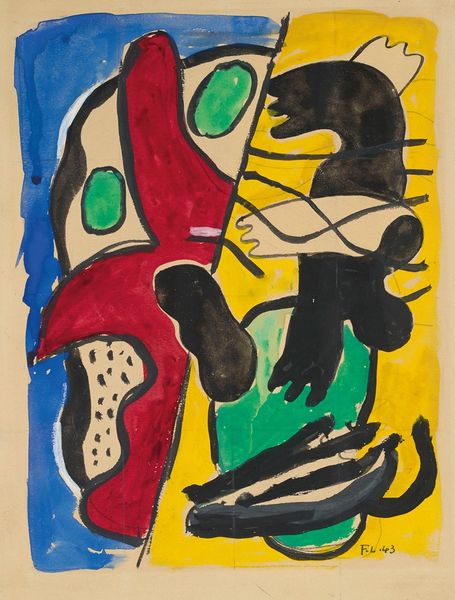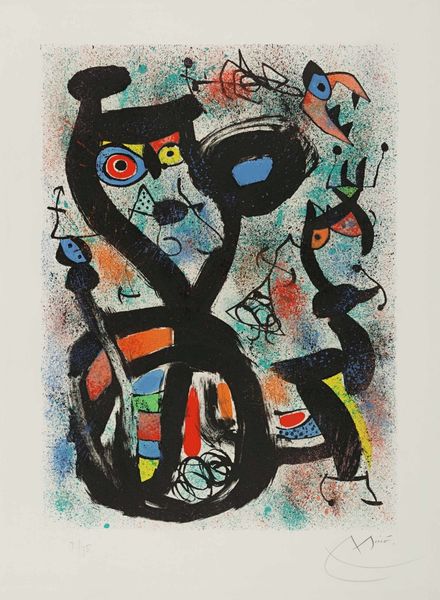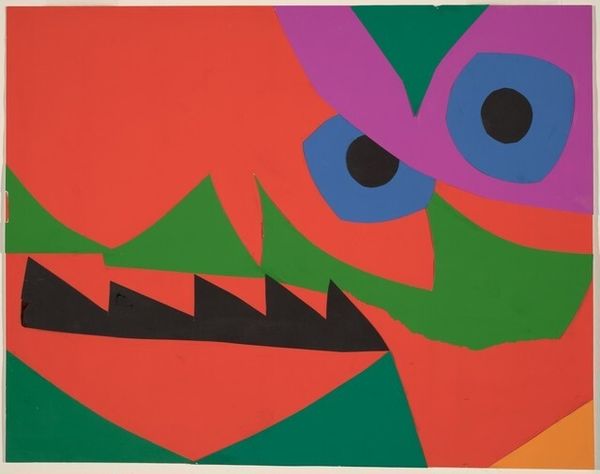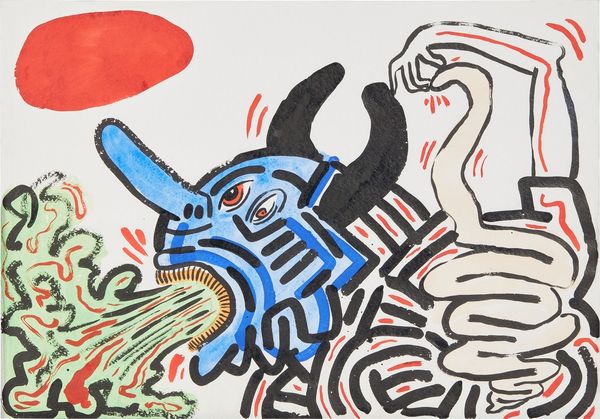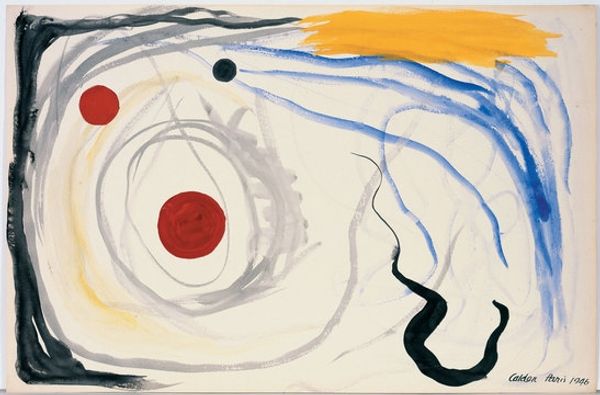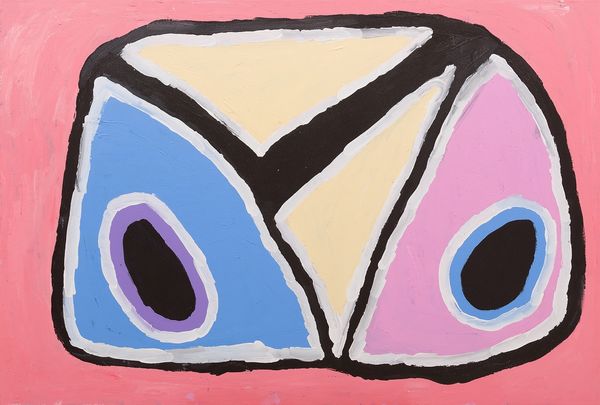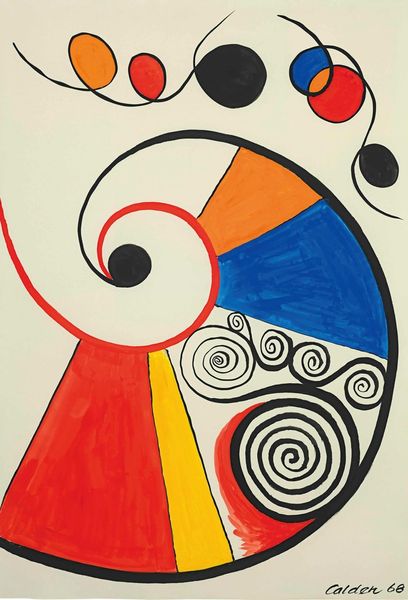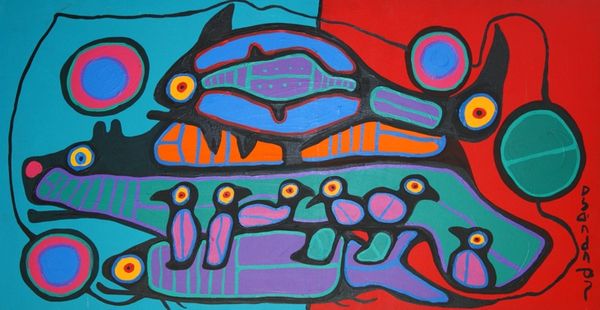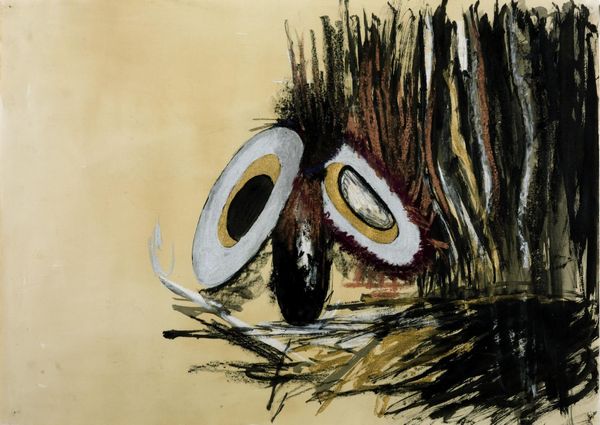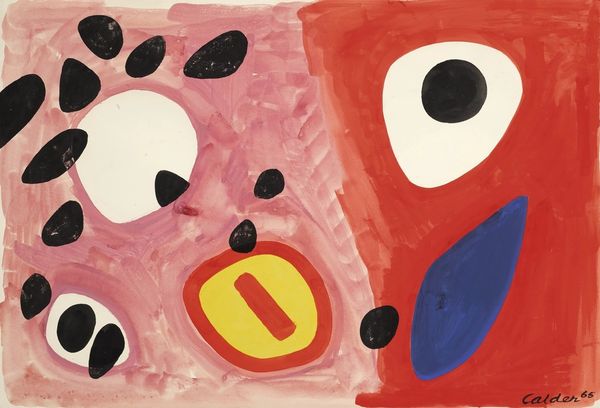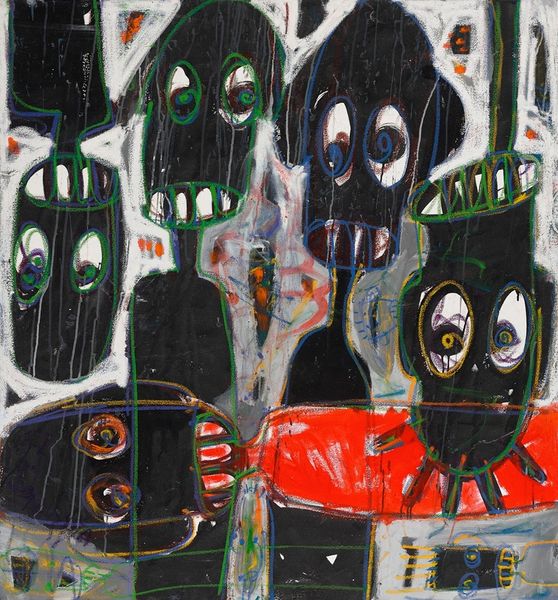
painting, acrylic-paint
#
abstract-expressionism
#
abstract painting
#
painting
#
acrylic-paint
#
biomorphic
#
abstraction
#
modernism
Copyright: Alexander Calder,Fair Use
Curator: Looking at this painting, "Untitled" from 1946 by Alexander Calder, I’m immediately struck by its almost primal energy. The shapes, the colors... it’s so dynamic. It looks like Calder has tried to catch pure sensation, to evoke motion rather than just representing it. Editor: Primal energy, huh? I see what you mean. The painting certainly vibrates with color, that pulsing red shape against the quieter blues, creams, browns. I read it as a kind of post-war release, maybe even anxiety. These biomorphic forms—do they represent a kind of wounded organism attempting to reconstitute? The stark black voids definitely unsettle me. Curator: Wounded? I can also appreciate that it may also capture something beautiful on its way to collapse, the vibrant yellow possibly pointing at a past vitality. These organic, shifting shapes remind me more of playful interactions rather than violent rupture. Calder always loved the circus, after all! The shapes and their kinetic balance suggest an underlying optimism, like everything will eventually find its right place in motion. Editor: Ah, the circus as a metaphor for precarious equilibrium. Fair point! But let’s not forget that the late 40s also signaled a rise of nuclear anxiety. We cannot overlook this political background, these dark masses can point at those social wounds... They give the paintings teeth. It may look friendly from afar but these biomorphic abstraction can signify more difficult subjects. Curator: Teeth indeed! Maybe it's both. Calder juggles so much with deceptive ease. To me, this painting’s a testament to the endless push and pull that define our experiences: hope and anxiety, chaos and harmony, violence and joy. He certainly creates a really special balance in this image. Editor: A balance achieved, precisely, through acknowledging those tensions. This is where abstraction succeeds—holding space for multiple interpretations, reflecting back at us our own particular moment in time. It’s like the painting invites us to animate its shapes with our own hopes and fears.
Comments
No comments
Be the first to comment and join the conversation on the ultimate creative platform.
